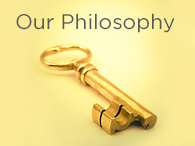 Osteoporosis is a complex condition that is still not fully understood. Healthy bones are one of the most important factors in maintaining quality of life as we age. Fractures resulting from osteoporosis are more likely among older adults, and often so debilitating that many people never fully recover from them. In fact, a relatively high percentage of the elderly die within a year of a hip fracture.
Osteoporosis is a complex condition that is still not fully understood. Healthy bones are one of the most important factors in maintaining quality of life as we age. Fractures resulting from osteoporosis are more likely among older adults, and often so debilitating that many people never fully recover from them. In fact, a relatively high percentage of the elderly die within a year of a hip fracture.
Most healthcare practitioners agree that frail health, more than any other factor, contributes to the risk of fracture due to osteoporosis. They also know that creating and maintaining good overall health is fundamental to creating strong bones and preventing fractures later in life.
Maintaining good bone health requires more than simply drinking your milk and taking a multivitamin. Your overall health, including bone health, is influenced by a multitude of things including nutrition and hormones, but also your exercise habits, your emotional state, environmental factors, and your genetic makeup. Some of these influences, such as genetics, you have no control over; but you can have a positive impact on your bone health by making the right choices in other aspects of your life, starting right now.
Factors Affecting Bone Health
Many lifestyle factors contribute to a decrease in bone mass, including the harmful effects of smoking cigarettes, consuming alcohol, and consuming excess protein. Lack of exercise (especially weight-bearing exercise) can also have an impact, as well as a hormone imbalance and nutritional deficiencies. However, the factor that contributes the most to a high risk of bone fracture is frail health as a result of the aging process.
Effects of Aging
Loss of bone density does occur with age, but not everyone suffers a fracture as a result. Other aging factors tend to be more critical risk factors. Many of the conditions that increase the likelihood of an elderly person falling and possibly breaking a hip can be symptoms of old age, such as:
- Decreased muscle strength
- Poor Eyesight
- Lack of coordination
- Shakiness or tremors
- Weak balance
- Mental confusion.
Note that many of these symptoms can also be the side effects of medications, or complicated by medications, which means they are more likely to occur in conjunction with another condition or illness. Osteoporosis is rarely the only condition for which an elderly person is being treated.
Hormones
Another age-related factor that affects bone health is a decline in sex hormone levels, which may partially explain why post-menopausal women face a higher risk of osteoporotic fracture than men of the same age. Hormones that play a crucial role in maintaining bone health are:
- The estrogen hormones (estrone, estriol and estradiol), which inhibit bone resorption
- Progesterone, which stimulates bone formation
- Testosterone, which stimulates bone formation and calcium absorption
- DHEA, which is a precursor hormone that increases the levels of testosterone, while also inhibiting bone resorption and stimulating bone formation.
Furthermore, chronic stress leads to over activity of the adrenal glands, and overactive thyroid or parathyroid glands are also associated with osteoporosis. Therefore, maintaining optimal hormone balance in also crucial to maintaining strong, healthy bones at any age.
Nutrition
Maintaining healthy bones also involves a well-balanced diet including essential bone-building nutrients, such as calcium, magnesium, vitamin D and others.
Calcium & Magnesium
Typically, osteoporosis does not stem from inadequate calcium intake, but from inadequate calcium absorption. In order for the body to absorb calcium, it also needs comparable amounts of magnesium, another mineral.
Green leafy vegetables, asparagus, broccoli, cabbage, oats, legumes, almonds, sesame seeds, tofu and seafood, especially salmon and sardines (eaten with the bones), are excellent sources of calcium. The calcium from these non-dairy sources is more readily absorbed than the calcium from milk, partially because plant proteins do not inhibit absorption like animal proteins do. In addition, legumes and leafy green vegetables such as kale and collard greens offer the added bonus of being high in magnesium, which promotes calcium absorption.
Vitamin D
Vitamin D, which we get primarily from exposure to the sun’s rays, is also essential to calcium absorption, “You can eat as much calcium-rich food as you want to, but if you don’t have enough vitamin D in your body, you won’t be able to absorb that calcium into your bones.
Most elderly people, especially if they are frail or bedridden, have insufficient levels of vitamin D, which contributes to their risk of fracture. Without enough vitamin D, their bone remodeling process is compromised and bone breakdown quickly surpasses the rate of rebuilding, resulting in porous, brittle and weak bones.
Even though milk and other foods have “vitamin D added,” sunshine is a better source of vitamin D and, therefore, a better osteoporosis preventative.
Exercise
Physical activity plays a crucial role in maintaining bone mass throughout life. Exercise at any age actually improves the bone remodeling process: This means that repeated application of a physical stress will actually cause that bone to remodel and become stronger conversely, immobilization and weightlessness result in accelerated bone loss.
Exercise also improves muscle tone and balance, which also help to prevent falling and reduce the threat of fractures. Bone health cannot be fully maintained with supplements and prescription drugs. Each and every one of us needs to do everything in our power to maintain bone health, but that doesn’t mean you should take a drug. Instead, you need to get started on a bone maintenance and building program, and the earlier you start the better.





